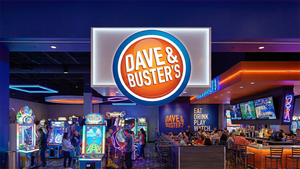 Photo from Unsplash
Photo from Unsplash
Originally Posted On: https://croner.co.uk/resources/managing-health-safety/loler/
LOLER is an Acronym for Lifting Operations and Lifting Equipment Regulations 1998.
This is a set of regulations that ensures employee safety while lifting heavy items or operating lifting equipment.
We’ve put together a quick guide that covers what the LOLER regulations are, how an inspection should be carried out and what types of training you should be providing your employees.
If you need immediate advice, get in touch with one of our experts here 0800 141 3775.
What is LOLER?
It’s a set of regulations that place a duty on both the person and companies who own, operate, have control of, or have control over lifting equipment.
All lifting operations involving the use of lifting equipment must be properly planned by a competent person.
They all must be properly planned and also be properly inspected, appropriately supervised and carried out in a very efficient and safe manner.
What is a lifting operation?
Regulation 8(2) of LOLER defines a lifting operation as ‘an operation concerned with the lifting or lowering of a load’.
A ‘load’ is the item or items being lifted, which includes a person or people in control over lifting equipment.
Most Lifting operations must have an associated lift plan. This must mitigate any conditions that could endanger the employee or others in the area.
Please note any failure of Lifting Equipment may be reportable as a dangerous occurrence under RIDDOR.
What is lifting equipment?
‘Lifting equipment’ means work equipment appropriate for the task of lifting and lowering loads.
This includes handle lifting equipment, accessories and attachments used in providing lifting equipment for anchoring, fixings or supporting the use of work equipment.
A brief list of lifting equipment includes:
- Overhead cranes and their supporting runways
- Patient hoists
- Motor vehicle lifts
- Vehicle tail lifts and cranes fitted to vehicles
- A building cleaning cradle and its suspension equipment
- Goods and passenger lifts
- Telehandlers and forklifts
- Lifting accessories
Lifting accessories are defined as:
“Pieces of equipment used to attach the load to lifting equipment, providing a link between the two.”
Consider the accessories when determining the overall weight of the load.
Examples of lifting accessories include:
- Fibre or rope slings
- Chains (single or multiple leg)
- Hooks
- Eyebolts
- Spreader beams
- Magnetic and vacuum devices
Marking of lifting equipment
All lifting equipment, including accessories, must be clearly marked. This is to indicate their ‘safe working loads’ (SWL) – the maximum load the equipment can safely lift the safe working load.
Sometimes, the SWL of equipment or accessories depends on its configuration. In these cases, the information provided on the SWL must reflect all potential configurations.
For example, if the hook of an engine hoist can be moved to different positions, the SWL should be shown for each position.
In some cases, the information should be kept with the lifting machinery.
For example, the rated capacity indicator fitted to a crane shows the operator the SWL for any of the crane’s permitted various lifting operations and configurations.
Accessories must be marked to show any characteristics that might affect their safe use. This may include the weight of the parts, where their weight is significant.
Where equipment is to be used to lift people, it should be marked to indicate the number of people that can be lifted in addition to the SWL of the equipment.
Lifting equipment that is not designed for lifting people must be clearly marked to indicate it should not be used to lift people.
What equipment is covered by LOLER regulations?
LOLER regulations cover specific equipment for work purposes. For example, a lift that is used for work purposes, such as moving stock around a shop, is covered by LOLER regulations.
How often should a LOLER Inspection be carried out?
All lifting equipment must have a thorough inspection carried out under LOLER regulations.
This thorough examination should be part of the routine maintenance of the specialist equipment.
The time frame for these inspection reports differs depending on the Equipment as follows:
- Any lifting equipment or associated accessories used to lift people – every six months. Examples are:
- Access platforms, passenger lifts and window cleaning equipment
- For all lifting accessories – Every six months Examples are:
- Lifting chains, strops, eye bolts, specialist lifting attachments
- For all other lifting equipment – Every twelve months. For example
- Overhead or pillar cranes, forklift trucks, lifting Jacks (anything that is not used to lift people).
Should lifting operations be planned out?
Yes, all lifting operations that includes the use of lifting equipment should:
- Be planned properly and completed by a competent person.
- Be supervised and carried out in a safe manner.
While planning any lifting operations you should ensure that the correct risk assessments have been carried out, and which piece of equipment is appropriate for the task and method.
This can include anything from simple common tasks, where minimal planning is needed from the trained and competent person.
To more complex tasks that need more in-depth and sophisticated planning, these can typically include expert input, constant monitoring and supervision. This type of planning is usually undertaken by a specially trained member of the team.
Training
Anyone who uses or requires lifting equipment must have been given suitable and sufficient instruction and training to carry out these functions and the training records kept for inspection.
Expert support
If you need further guidance on LOLER, or any other health & safety process, speak to one of Croner’s award-winning health and safety consultants who are specialists in their field.
We’ve been helping businesses for over 80 years and our advice line is open 365 days a year, 24 hours a day. Why not speak to a Croner expert on 0800 141 3775.





